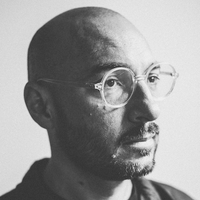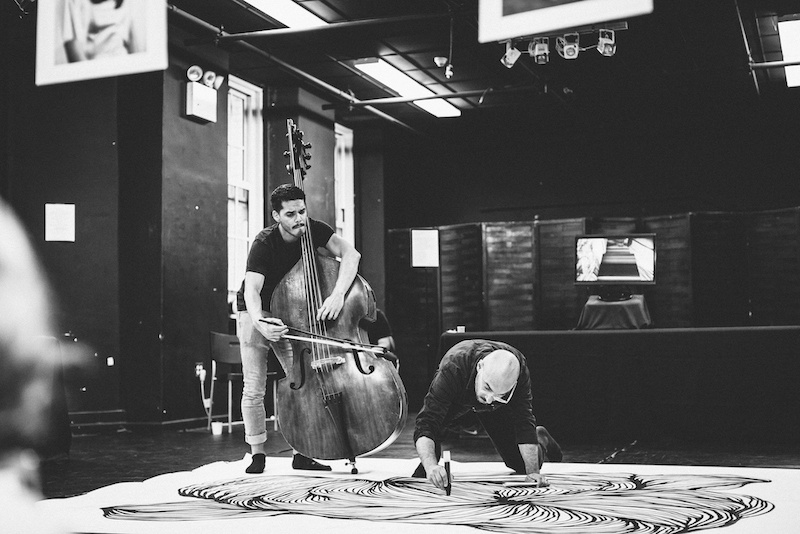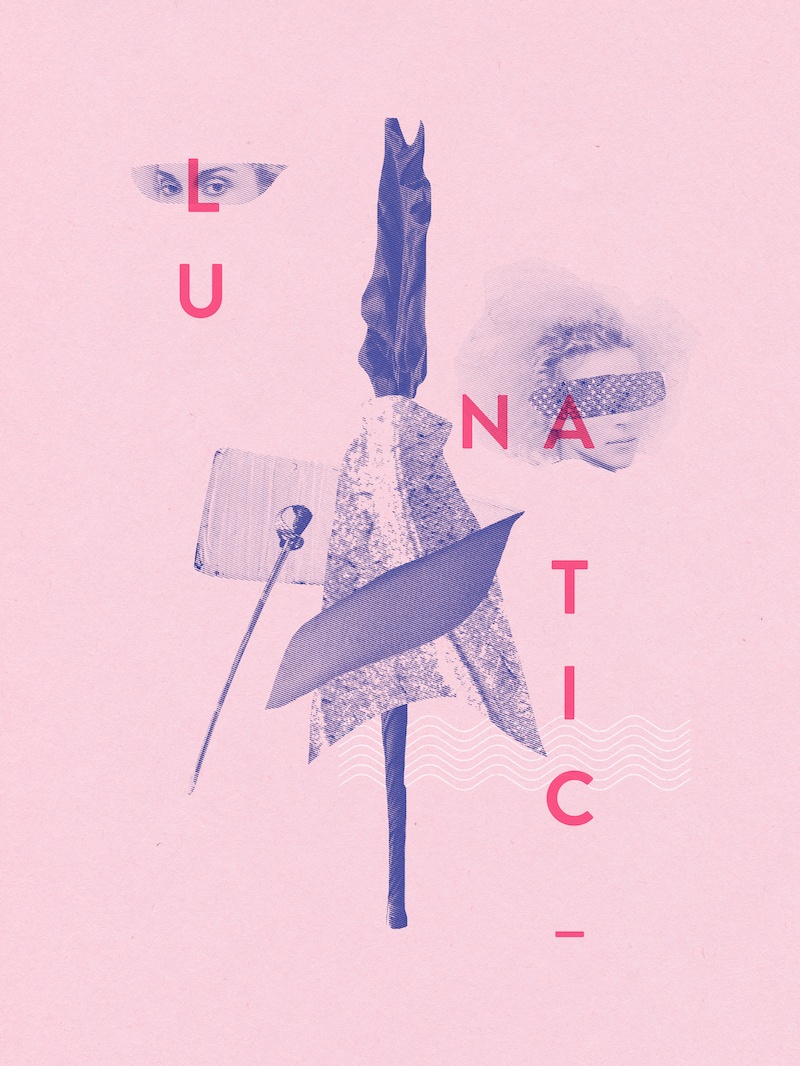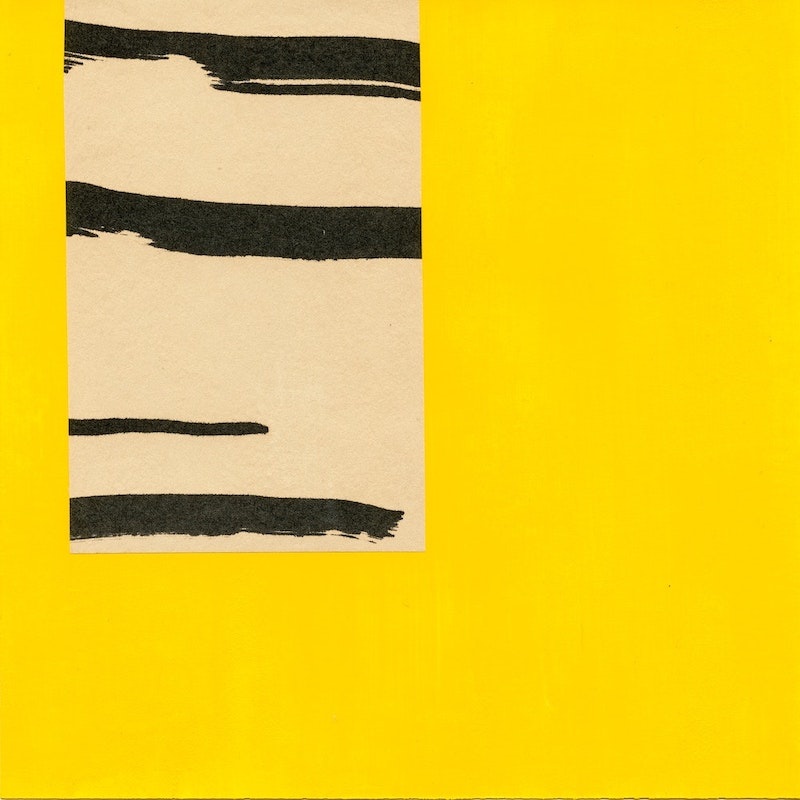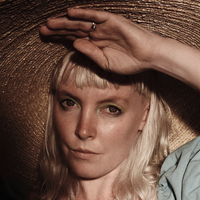As told to Miriam Garcia, 2642 words.
Tags: Art, Music, Process, Multi-tasking, Mental health, Time management, Beginnings.
On the value of trial and error
Multi-disciplinary artist Juan Miguel Marin discusses not fearing imperfections, the science and meaning behind repetition, being yourself, and embracing generalism.You play the drums and are really interested in music. How does music influence your work and artistic practice?
My understanding now of my relationship to music is almost equally divided with the performance aspect. It’s this idea that energy is change: me offering something to a crowd, to a group of people, and having something come back to me, as a form of energy, or love, whatever that is.
I’ve played music since I was 11 in different bands. I’m lucky to have had the experiences I’ve accumulated by being in a band. But the idea of calling myself a musician is always strange because I’ve never studied music, and I haven’t had that sort of path. But my relationship to sound is very personal and very important to what I do as an artist.
It’s taken a lot of years to be at peace with what kind of musician I am, with what type of sounds I make, because I’m very drawn to different genres. I was never just like, “Oh, punk is just my thing, or pop music, or heavy metal.” I’ve listened to, or been interested in, many different genres. But at the end of the day, there’s something inexplicable about how your mind and body react to sounds or performances.
Later [in life], I discovered ambient music, and field recordings, more avant-garde, and experimental music. It’s always lovely to discover new ways in which sound can affect you. I still have that curiosity. Maybe even more so as an adult, in exploring new things that are related to sound. There’s something that I feel I cannot compare to anything else that comes from my experiences as a musician, or being in a band, that is directly connected to sound, or experiences through sound.
Juan Miguel Marin, Drawing Under the Influence (Bajo la Influencia), El Museo del Barrio
You used to have a full-time job but now you are a freelancer. Was there a particular event that motivated you to do this transition?
It was an accumulation of experiences. I came to the U.S. as an immigrant. I studied graphic design. At that time, I was also playing music. I had to have a job to stay in the country and make a living. I worked for a solid six years with this design company, doing a lot of branding and packaging. I did that for many years and I was literally moonlighting as a drummer as well to the point where I was taking vacations to go on tour, and having that life, playing in five different cities, and then coming back on Sunday. Then I started to travel to New York for design conferences and I would go back knowing that I wanted to spend more time here.
So I quit my job and came to New York with the idea of finding something. I landed a gig in advertising as an art director. But I only lasted a year. Every day I was more certain that my path was somewhere else, not in an ad agency, not in a design studio—but I feel like I was fighting an addiction to a salary. Every day I would go to this job knowing that I wanted to reconnect with music and to find my voice as an artist. I knew there was probably somebody out there in the world who would’ve loved to be sitting in the seat that I had with this salary, with these benefits, with this dynamic, but every day I was having a really hard time going through the day.
I always contributed creatively and was part of the team, but eventually it started affecting my relationship with everyone around me. I was not a happy person anymore. I made the decision to quit. I would say to myself, “Okay, I know I’m going to quit, but I’ll quit next month.” And then every two weeks I got a paycheck, and that’s kind of like anesthesia, and like, “Okay, next month. Yeah, next month.” And it took a little too long but I did it.
Your work is the result of a process akin to active meditation. Can you elaborate on what does this means and how you reached this process?
It’s been a journey. It’s not that I have everything planned, or that I even imagine things the way these eventually played out.
In the transition from being employed and having a steady paycheck I met Shantell Martin, who is now a true and wonderful friend. She invited me to her place for a drawing date. At this point, we have had conversations about me wanting to pursue art, but really not having a clear plan or path yet. I worked as a designer for many years, but I was not in my daily practice either drawing, or painting, or using physical materials. I was working digitally most of the time.
I showed up to the drawing date, and she got some music going, a few sheets of paper, and a bunch of markers and materials. The plan was for us to draw whatever we felt. She was very good about easing me into that experience. And every few minutes we’ll swap drawings, and I’ll draw on to whatever she was drawing, and vice versa. I have one-half of those two drawings, and it’s framed on my wall, just kind of as a reminder of how lost and scared I was. I left that session feeling something very strong about materiality, and drawing under this prompt or idea of it could be whatever you want. It doesn’t have to look like something. It’s more about this connection to the materials and the environment you’re in.
I guess I wasn’t fully aware at the time, but it was a meditation. That drawing session was a form of meditation. I left with that very important message, and thankfully I was able to channel it and I started buying materials, and paper, and always having those materials around me. And slowly, it became an everyday thing. Eventually this repetition of lines that you’ve seen, like doodling, meditation, open awareness. There’s science and meaning behind repetition. But at the time, it just felt good, and I recognized that that was a form, a way for me to deal with my own anxiety, and that process of growing, evolving, trying to become an artist.
Juan Miguel Marin, St. Vincent, collage (Contemporary Color)
You are also an advocate of the idea of trial and error as a creative tool. Why do you think developing this is relevant?
I think sometimes we stop doing things, or we don’t start doing things because we think that we have to be perfect from the beginning. And that’s painful. I feel like I’ve experienced that first hand and I see it in people. Some things can be part of your career or your path, but there’s plenty of things in life that can give us a lot of joy that we don’t do because we think it has to be great, or it has to be perfect.
To me, there’s nothing more powerful around a creative process than trying, experimenting, and failing. Trying something and realizing that, “Oh, this thing doesn’t work.” But something happens at the moment, and another door opens, and when you arrive, and hopefully you are surprised. I don’t think that happens without trial and error. Going for something, and learning from whatever feeling you get back, even if it doesn’t work. It also applies to the idea of showing up. I come to the studio every day, but that doesn’t mean that every day something amazing will happen. But if I’m not here, nothing amazing is ever going to happen.
At some point, I slowly started to connect the dots between repetition and drawing, and how that felt. And then when that body of work became the drawing performance, realizing that there is a possibility for me to connect with people, and a form of communion through this drawing meditation, and what else is out there in the world that is part of this idea. I ended up arriving at this form of caps attention called open awareness, which can be induced by manual repetitive tasks. It’s something very simple that happens to all of us in different ways. For me, before I actually understood open awareness the way I do now, I would always remember my mind just going super loose, and creative when washing the dishes at home. That sort of repetition, manual task was always getting me to remember things from life that I have forgotten, or very specific moments, or just dreaming. And that’s just tied to whatever happens in your brain when you’re doing something with your hands repetitively.
So, I’ve built this workshop around some exercises in which I get people to draw with very specific directions, so everyone can get their mind into a place where you don’t have to be an artist. If you can barely hold a pen, you can do this workshop, and it’s way more about what happens in the process, and the feeling, than what the pieces or the drawings look at the end. When we’re kids, we all draw, right? Everyone draws, everyone paints, everyone makes art, and we get so much joy out of that. And then at some point, somebody tells you, “Your car doesn’t really look like a car,” so you can’t draw, you’re not good at drawing. And we suppress that, and we stop. And that’s almost like a crime to me. And that’s why part of my practice or my journey as an artist, reconnecting with my child’s self more and more every day.
Juan Miguel Marin, Pasa el Sol, mixed media series
Every two weeks you meet with friends, and you just play music. This has been a space to just be creative and free with them. With the pandemic, so many people have moved, places have closed, and things just changed. What is some good advice to cultivate a creative network of friends or of people?
The pandemic made me realize that there are things in life that I just cannot live without. And those things are not necessarily material things, but the idea of gathering with people, and having a sense of energy exchange of some sort. It’s always really nice when people reach out to you and invite you to participate in something. That’s easily a great feeling and an amazing ego boost. But it doesn’t have to work like that all the time. I realized that I feel just as good being invited to something as I do when I reach out to others, and invite them over to try to do something. It’s always about connection, and connecting with people, and having conversations, and feelings. I do work because I want to connect with people through it somehow.
If I could give any advice to anyone about gatherings, and hosting, and creating community, is that it doesn’t have to always be about yourself. It’s a great, great feeling when you can remove whatever you’re doing, your ego, your own practice, your own path, and host, participate in something that it’s greater than yourself. Goes beyond your own selfish goals.
In my experience, there is always a magic that comes out of putting yourself out there, and in favor of somebody else’s work, or somebody else’s mission, or journey, or finding that balance. It feels great, and I want to do it more. And the name for those gatherings is “Bonita Bodega”. The whole idea was to just set a table in which people can come and experiment with sound. It is definitely a bit of a sound bath, and anything goes. The other day I had some very crisp apples from Apple picking upstate. I don’t remember trying this before, but taking a good bite out of that Apple through that microphone that had some delay and echoes going was just so satisfying and so soothing. It’s really about that. It’s about sound as a tool for feelings, and sparking ideas, or memories. it’s really about gathering and sharing, and then we even eat tacos afterward, and we chat. I wouldn’t trade that for anything.
You have collaborated with the Criterion Collection, you’ve worked in projects with David Byrne, you have this community of friends, you have your studio in Brooklyn… Have you ever experienced that feeling of “made it as an artist”? Is that even a thing?
No. I guess every day I hope that happens. But at the same time, I’m a bit scared of that. And in a way, I admire that people that build their careers in one specific lane and one specific path. It was a cause of conflict years ago, but now I’m a lot more at peace with the idea that I’m a bit of a generalist. I find myself enjoying different phases of life. Like right now, I’m really, really into this whole sound world. But at the same time, I see an empty space in my studio, because I just shipped a piece to a fair in Buenos Aries, and I know that I want to paint. It’s about being aware and recognizing steps that you want to take, but also being in the moment. Right now, sound is the thing, and I know I’m going to make space for that painting. It used to drive me crazy. I used to really suffer about this duality and this want to do all these things, and then not feeling great about recognition, at any of that in a way. I don’t know if it’s a lesson, but it’s a choice.
Juan Miguel Marin, Criterion Collection, The Cremator
There are people that want recognition, and for that maybe focusing on one specific area is critical or important. At this point in my life, I’m completely at peace with the idea of getting involved in things that give me joy, that get me to meet wonderful people, and recognition is almost… I don’t want to say completely irrelevant, because I think I would be lying. We all want a degree of encouragement or recognition, of course. But it’s definitely not what drives me.
Going back to the I’ve made it feeling, I sometimes think that my art practice and career are in diapers, and I’m almost scared of the feeling of what’s after you make it. I’m not sure I want to know. I’m frightened about the unknown of what is after you make it. I just hope that whatever I’ve done makes people connect, have conversations, have some feelings, spark some thoughts. That to me maybe would be as close to making it as possible.
Juan Miguel Marin Recommends:
A song that made me feel a lot of things during a recent show: “Did my best” by Xenia Rubinos from her new album Una Rosa.
Thoughtful interactive public art: “The end of the Day” project by artist April Soeterman
Ecuadorian food: Maduros con Salprieta. You will thank me later.
“To Kill the Beast,” a film by Agustina San Martín
A recommendation for hacking your days that might spark new connections in your brain: Try going on walks focusing your sight above the first floor of every House/building instead of looking at the same things you see every day. Discover new stories, new textures, travel without traveling.

